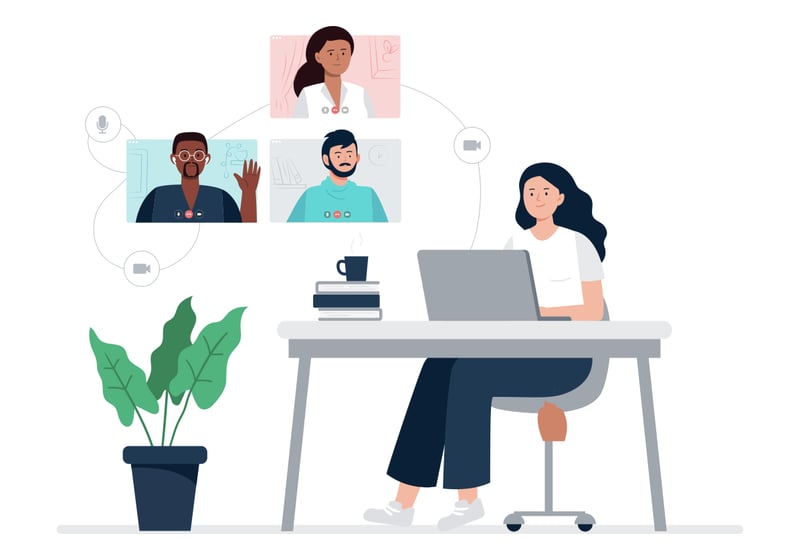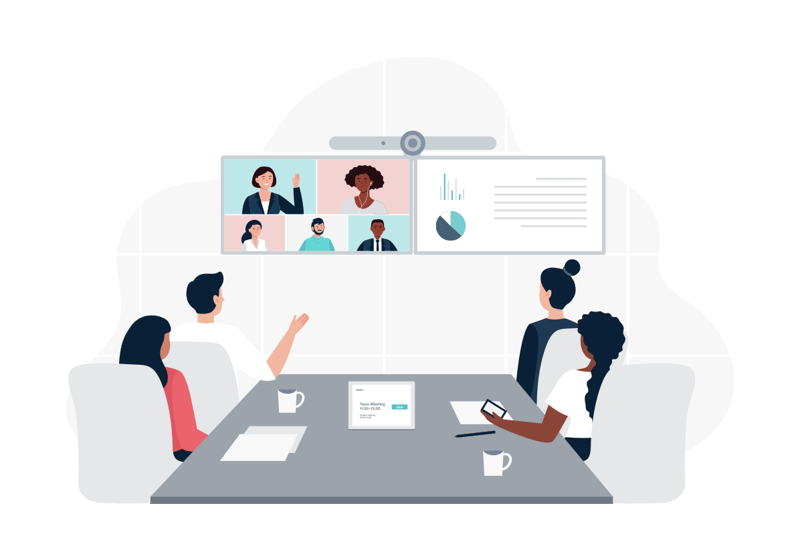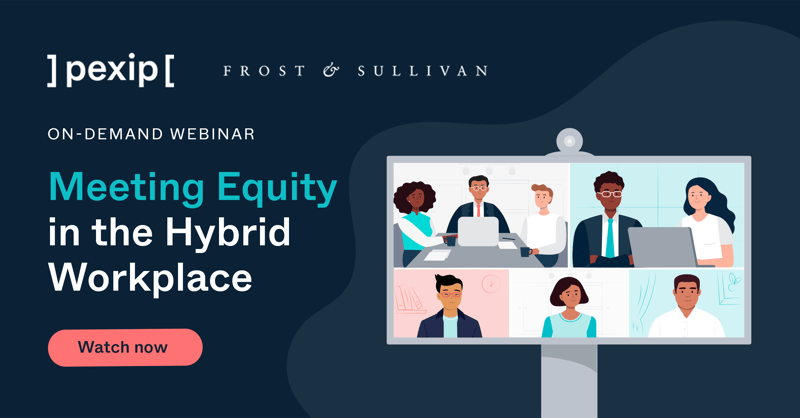How the right tools can help leaders create more inclusive meetings
In this article you will learn about the challenges of creating an inclusive meeting environment, and how leaders can build a more inclusive hybrid workplace.
- What is an inclusive meeting?
- Why is meeting equity so important?
- What role can virtual meetings play?
- What are the challenges of hybrid working?
- How can technology make meetings more inclusive?
- Discover the 'future of work'
For many organizations, the hybrid workforce has arrived. With some people working from home and others at the office, leaders are navigating new territory when it comes to creating a positive, productive work environment and sense of belonging for employees. Part of this means prioritizing meeting equity and inclusion.
But what does that mean exactly?
As the Chief People Officer for a company that specializes in video collaboration, I get asked about this topic often. I like to say that meeting equity and meeting equality are ways of ensuring that our meetings are valuable and that everyone feels they are meeting on equal terms.
This means taking steps to ensure that everyone has a similar experience, and feels that they have equal opportunities to contribute and have an impact, whether they are participating in meetings at an office or connecting from a remote location by using video conferencing.
Below, I’ll go into some more detail about why this is - and will continue to become - one of the most important issues as we reimagine the modern workforce.
Free on-demand webinar: Meeting equity in the hybrid workplace
What it is, why it matters, and how technology can help.
▶️ Watch this free on-demand webinar to find out.
Why meeting equity is important to employee well-being and company culture
The pandemic has forced both employers and employees to rethink their priorities, goals, and expectations. As workplaces and business strategies have changed, so have employee mindsets.
Now, leaders must focus more than ever on creating an environment where employees have a voice, and are given the tools and opportunities that allow them to do the job they were hired to do. They have to lead with a greater sense of trust and autonomy, and focus more on outcome and impact rather than input and control. Providing a culture that supports self-leadership and inclusion is critical to job satisfaction, loyalty, and ultimately, productivity.
Research shows that:
- A healthy work culture and happy employees correlate with better company performance
- Employees who feel respected and included are much more productive
- Happy employees are more agile, more loyal, more willing to share knowledge, and more eager to walk the extra mile when necessary
- Inclusion instils trust and creates a much more resilient organization

The new model of remote and hybrid work is broadening hiring pools, and promoting a culture of inclusion and belonging can also help your company attract and retain the best talent.
Employees today are looking to join organizations in which they feel they can grow, learn and thrive, both personally and professionally. Leading your discussions with candidates and new hires about your company’s culture of inclusion can help your organization to be seen as a thought leader, along with being a popular place to work.
How inclusive virtual meetings can help drive meeting equity
What strategies can you use to make meetings more inclusive?
While many organizations had slowly been moving toward a more digital and dispersed way of working, prior to March 2020, “going to work” was often tied to a place where we went to meet and collaborate. It’s a model that’s been around for a long time, but that doesn’t mean it worked for everyone. In fact, for many people, it didn’t.
In traditional in-person meetings, while the topic may be about budgets or campaigns, there’s a lot more happening in the room when it comes to contribution and communication. Gender, race, age, physical ability, seniority, income level, experience, personality, and communication styles are just a few of the factors that play a role in team and meeting dynamics. For some employees, inclusion has never felt like an issue. For others, fully virtual meetings may have come as a relief - and a chance to fully participate and be heard.
In this way, video conferencing can be seen as “the great equalizer”; a way of levelling the playing field. By taking away the implicit and explicit power dynamics that can happen during in-person meetings, there’s an opportunity for more diverse voices to engage in new ways.
Meeting the challenges of hybrid work
But while fully virtual meetings can provide a more equal platform for sharing ideas, the hybrid workforce, despite its many benefits, can create new challenges that we must also be ready to tackle. In some situations where meetings are split between in-office and at-home workers, the employees working from home may feel left out, unengaged, or isolated during meetings and other “hybrid” work interactions.
Different organizations are adopting different flexible-work policies, and whether people are working from home by choice or necessity, they should be provided with the tools that allow them to contribute and participate as much as their colleagues who are working in the office.
According to our 2021 Global Report on the State of Video in Large Enterprises, nearly 40% of the business leaders surveyed said they worry that remote participants don't fully participate or express their views during meetings. Some individuals in the survey also pointed out leaders need to adapt their behaviour and awareness, and take action to facilitate inclusion.
But while behaviour is an important element, it's also critical that your organization chooses collaboration technology that puts people first.

How Pexip's technology makes meetings more equitable
Pexip’s mission is to empower people to be seen and to engage in a better way. This is what we set out to do from the very beginning. We are constantly working to remove obstacles to joining video meetings, and to build technology that enhances and improves the meeting experience and the process of digital collaboration.
Some of the ways we do this are by:
- Building accessibility features into the core of our product designs
- Focusing on always providing an exceptional user experience. Whether you’re joining a meeting from a video conferencing unit in the boardroom or a laptop at your kitchen table, Pexip meetings are easy to join, and work the same way every time.
- Adaptive Composition, our AI-powered engine that automatically crops and frames faces so that everyone can easily be seen. With more people and fewer black boxes, meetings feel more natural and immersive, creating a better environment for engaging discussions.
- Ultra high-quality video and super wide-band audio help meeting participants read body language, see facial expressions, and hear every nuance, so that everyone can be seen, heard, and understood.
- Providing the ability to join meetings from any device, meeting platform, or browser. This makes virtual and hybrid meetings accessible regardless of someone’s location or technology.
As we work to find both immediate and long-term solutions for optimizing this new way of working, it’s becoming clear that a top priority among leaders should be building a culture of inclusion that’s both tailored to, and enhanced by, the hybrid workforce.
Learn more about how Pexip is helping organizations prepare for the future of work.
- Digital transformation
- Connect

_2.jpeg?width=700&name=iStock-1214822053-(1)_2.jpeg)




